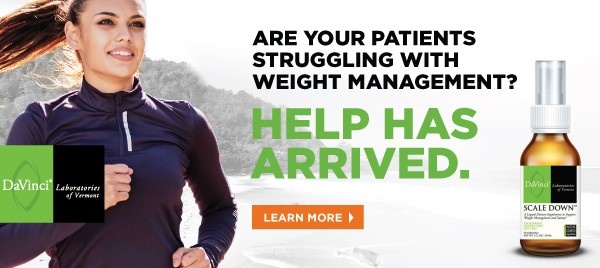.jpg?width=750&name=DIM-DIMPRO-Weight-Managment%20(1).jpg)
Diindolylmethane (DIM) is a compound converted from cruciferous vegetables like broccoli, cauliflower, and Brussels sprouts. This natural compound plays a key role in hormonal support and weight management, and it can have a profound impact on hormonal health for both men and women.*
While a balanced, whole foods diet and physical activity is the foundation of a healthy lifestyle, people seeking healthy hormones or experiencing estrogen dominance are likely to benefit from this balancing technique.*
What Is DIMPRO?
Diindolylmethane is an important plant indole with many health-promoting properties. While cruciferous vegetables contain both indole-e-carbinol (13C) and DIM, the vegetables must be well-chewed or cooked for 13C to be converted to its dimeric derivate, DIM. Until this conversion takes place, 13C is not active in the body.1
DIMPRO is a proprietary blend of DIM, vitamin E, and phosphatidylcholine. We’ll get into the importance of taking vitamin E along with DIM in a moment, but an important takeaway is that DIMPRO is a highly bioavailable form that helps to mitigate health risks associated with estrogen dominance and slow estrogen metabolism.* DIM itself helps to balance the body’s three primary sex hormones—estrogen, testosterone, and progesterone—in both men and women.*
How DIMPRO Helps With Hormone Support*
Estrogen dominance is rampant in modern-day society, and it can wreak hormonal havoc in both men and women. Hormonal imbalances can result from ingesting conventionally raised meats and animal products filled with hormones and antibiotics, lack of physical movement, and other lifestyle and environmental factors that go against the grain of our genetic makeup.
DIM supports the systems the body already has in place that help to regulate hormones such as estrogen. While DIM does not work to augment hormones in any way, it can play a major role in balancing them.*
In women, there are three different estrogens, with estrone and estradiol being the two that are important outside of pregnancy. It’s crucial that the estradiol and estrone ratio be as close to 1:1 as possible, but obesity, hormone replacement therapies, and other factors can skew this ratio.
What is often seen, is that women become estrone dominant, which is the type of estrogen associated with breast cancer and other illnesses.2 DIM helps to support this type of estrogen dominance, therefore helping to regulate the three sexual hormones and create a balanced state.*
How DIM Helps with Weight Management*
DIM helps to achieve and maintain a healthy weight via several mechanisms.* First and foremost, the very act of balancing and supporting estrogen dominance often helps women reach a healthy weight. Estrogen helps women remain fertile, and body fat is essential for becoming pregnant. Since nature intends for estrogen to promote body fatness, estrogen dominance makes it virtually impossible to lose or successfully manage body weight. Estrogen dominance is especially associated with visceral fat, which is linked to poor cardiovascular health, insulin resistance, and other metabolic challenges³
When the body reaches a more balanced state of estrogen, other hormonal compensations tend to resolve. For example, cortisol output decreases, and lower cortisol naturally leads to lower insulin, both of which are fat storage hormones.
An excess of visceral fat creates inflammatory cytokines that reside in that fat, and this leads to systemic inflammation in the body.4 When inflammation becomes an issue, this can result in imbalances to the intestinal microbiome, also associated with obesity.5 When estrogen comes into balance along with other hormones, it’s very common for people to experience easier fat loss and overall weight management as the body begins working as it should.
Why Add Vitamin E?
The vitamin E as alpha-tocopherol found in DIMPRO acts as a stabilizing agent for DIM. Furthermore, this vitamin is a powerful antioxidant that initial studies suggest might have a phytoestrogenic effect, meaning it helps to balance estrogen.* Vitamin E is not only included in DIMPRO for purposes of absorption, but also because it is an excellent way to maintain the molecule of DIM itself.
Both DIM and DIMPRO are gentle and effective balancing techniques that can help kickstart you to optimal hormones and a healthier life. But as with concerns such as weight and hormone management, there are a multitude of things could be impeding your overall health goals. So, be sure to visit your functional medical practitioner to get the whole picture first. They'll steer you in the right direction and know if DIMPRO is right for you.
*These statements have not been evaluated by the Food and Drug Administration. This product is not intended to diagnose, treat, cure or prevent any disease.

By Fred Pescatore, MD
Fred Pescatore, MD, is a traditionally trained physician practicing nutritional medicine. To pursue his vision of a more personalized and healthful program, Dr. Pescatore opened Partners in Integrative Medicine. He is the author of several important books, including his newest book, The Hamptons Diet Cookbook, the follow up to his NY Times best seller The Hamptons Diet. He was the Associate Medical Director at the famed Atkins Center for five years. He is the President of the AHCC Research Association, President of the International and American Association of Clinical Nutritionists and is a member of the National Association of Physician Broadcasters, amongst other organizations. For more information, visit www.hamptonsdiet.com.
Sources:
¹ Bonnesen, C., Eggleston, I. M., & Hayes, J. D. (2001). Dietary indoles and isothiocyanates that are generated from cruciferous vegetables can both stimulate apoptosis and confer protection against DNA damage in human colon cell lines. https://www.ncbi.nlm.nih.gov/pubmed/11507062. Accessed November 26, 2019.
² Miyoshi, Y., Tanji, Y., Taguchi, T., Tamakin, Y., & Noguchi, S. (2003). Association of serum estrone levels with estrogen receptor-positive breast cancer risk in postmenopausal Japanese women. https://www.ncbi.nlm.nih.gov/pubmed/12796390. Accessed November 26, 2019.
3 Shuster, A., Patlas, M., Pinthus, J. H., & Mourtzakis, M. (2012). The clinical importance of visceral adiposity: a critical review of methods for visceral adipose tissue analysis. https://www.ncbi.nlm.nih.gov/pmc/articles/PMC3473928/. Accessed November 26, 2019.
4 Fontana, L., Eagon, J. C., Trujillo, M. E., Scherer, P. E., & Klein, S. (2007). Visceral Fat Adipokine Secretion Is Associated With Systemic Inflammation in Obese Humans.
https://diabetes.diabetesjournals.org/content/56/4/1010. Accessed November 26, 2019.
5Davis, C. D. (2017). The gut microbiome and its role in obesity. https://www.ncbi.nlm.nih.gov/pmc/articles/PMC5082693/. Accessed November 26, 2019.
6 Chamras, H. (2005). Novel interactions of vitamin E and estrogen in breast cancer. https://www.ncbi.nlm.nih.gov/m/pubmed/16091003/. Accessed November 26, 2019.







.jpg?width=750&name=DIM-DIMPRO-Weight-Managment%20(1).jpg)


%20(1).jpg)






